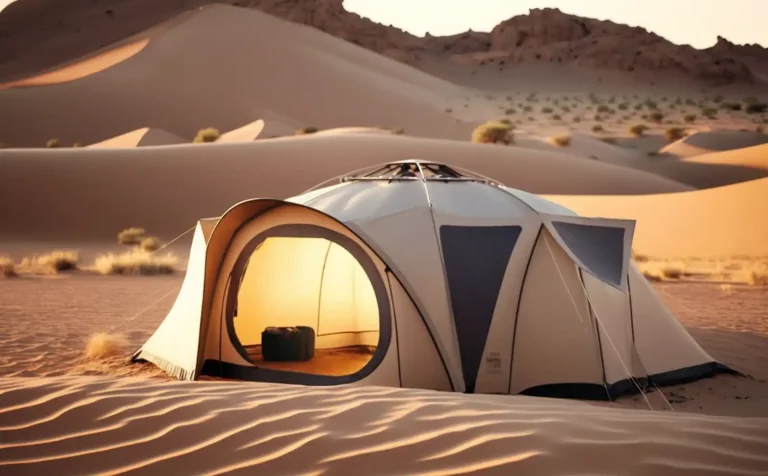If you’re planning a camping trip, choosing the right tent is critical to ensure a comfortable and safe experience. But with so many different types and models of tents available, it can be overwhelming to know where to start.
In this Pursuit Outdoors guide, we’ll break down the key factors you should consider when selecting a camping tent, so you can make an informed decision and enjoy your time in the great outdoors.
Ways to choose a camping tent based on need
Purpose and Seasonality of Use
The first thing to consider when choosing a camping tent is the type of camping you will be doing, as well as “Determine the Type of Camping You Will Be Doing”. Are you planning to backpack into the wilderness or set up camp in a designated campsite? The type of camping you’ll be doing will determine the size and weight of the tent you need.
Before you start shopping for a tent, consider what kind of camping trips you’ll be taking and in what season. Are you planning to backpack in the mountains during the summer or car camp near the beach in the spring? Different types of tents are designed for different purposes and weather conditions, so it’s important to choose a tent that fits your needs. Some of the most common types of tents include winter camping tents, hot weather camping tents, backpacking tents, car camping tents, wind resistant tent, and four-season tents.
Some camping tents visual includes:
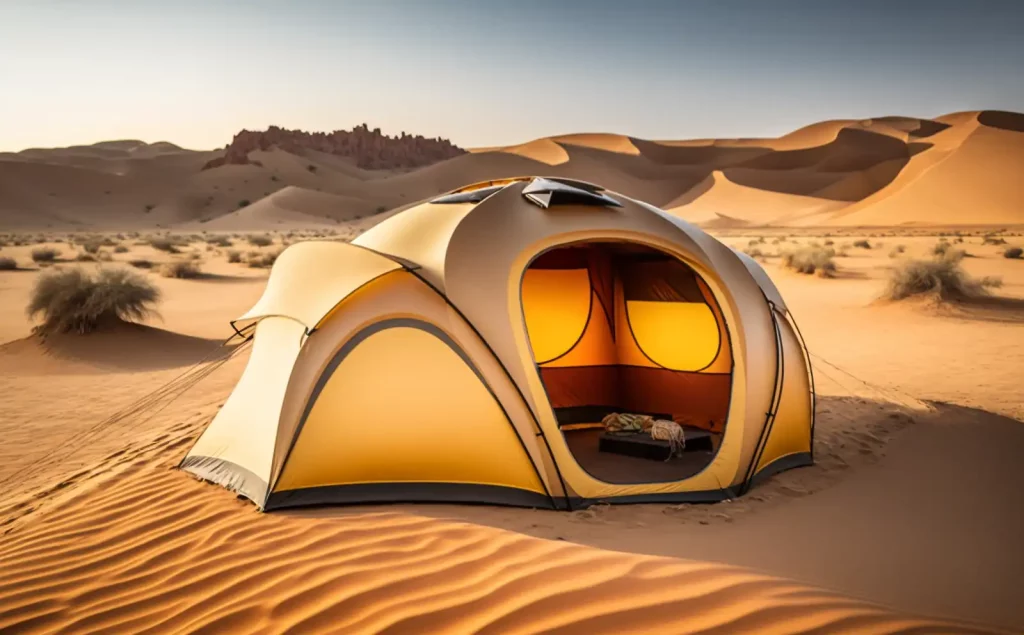
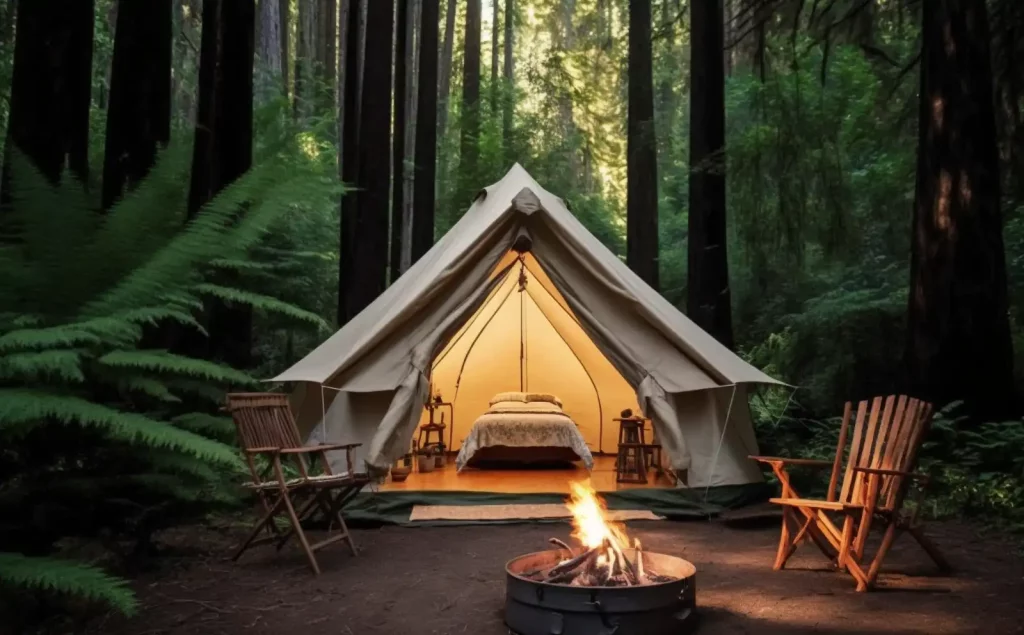
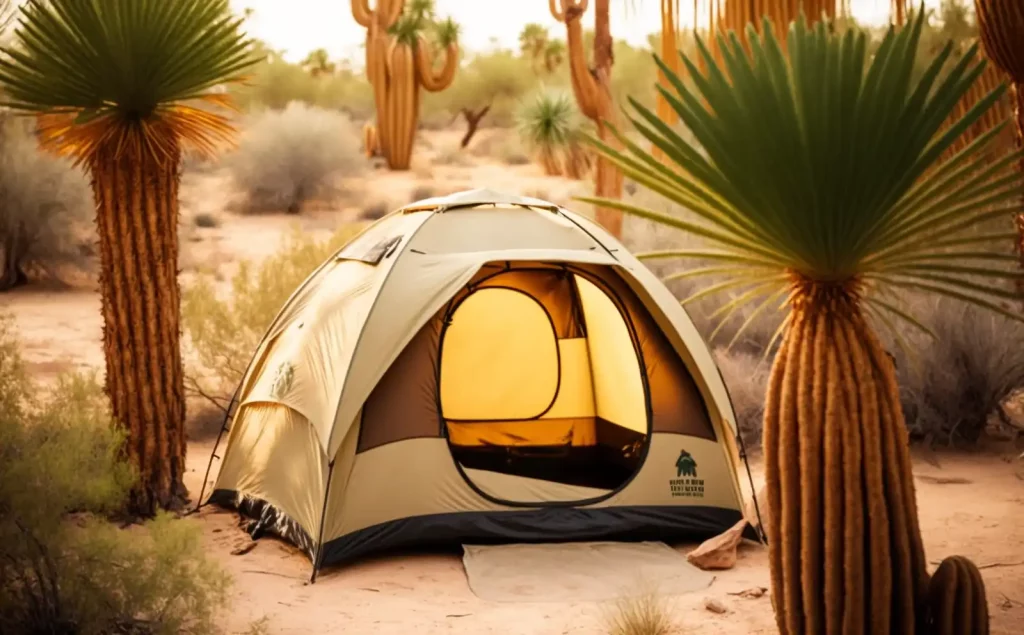
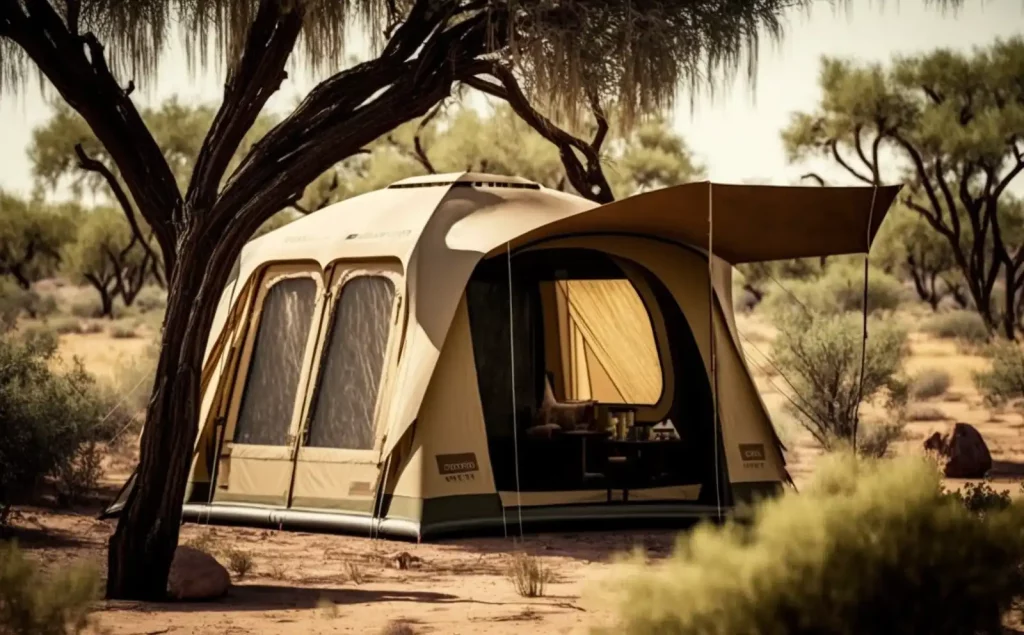
To know more: History and Evolution of Hot Tents for Camping
Tent Size and Capacity
The next factor to consider is the size of the tent you need. Tents are typically classified by their capacity, which is based on the number of people who can comfortably sleep inside. However, keep in mind that tent capacity can be misleading, as it doesn’t account for gear storage or personal space. A good rule of thumb is to add one person to the tent capacity for every two adults, or one person for every adult and child.
Tent Style and Shape
Tent style and shape also play a role in determining the right tent for your needs. Dome tents are popular for their stability and ease of set-up, while cabin tents offer more headroom and livable space. Tunnel tents are designed for high winds and inclement weather, while teepee tents offer a unique and spacious design. Consider which style and shape will best suit your camping needs and preferences.
Materials and Durability
The materials and durability of a tent are also important factors to consider. Tents are typically made of either nylon or polyester, with different denier ratings indicating their strength and durability. Look for tents with reinforced stitching and high-quality zippers, as well as sturdy tent poles and guylines. A good tent should last for many years with proper care and maintenance.
Weight and Portability
If you plan to hike or backpack with your tent, weight and portability are crucial considerations. Lightweight tents made of high-tech materials like Dyneema or Cuben Fiber are ideal for backpacking, but they can be expensive. Look for tents with a low packed size and minimal weight without sacrificing durability or comfort.
Ventilation and Breathability
Good ventilation and breathability are important for staying comfortable inside your tent. Look for tents with mesh panels and vents that allow for airflow and prevent condensation buildup. Some tents also feature built-in fans or solar-powered ventilation systems for added comfort in hot or humid weather.
Rainfly and Waterproofing
A rainfly is a separate layer that covers the tent and provides additional protection against rain and wind. Look for tents with a full-coverage rainfly that extends all the way to the ground for maximum protection. Additionally, check the tent’s waterproofing rating, which is typically measured in millimeters. A rating of 1500mm or higher is recommended for moderate rainfall, while a rating of 2000mm or higher is suitable for heavy rainfall.
Ease of Set-Up
The ease of set-up is another important factor to consider when choosing a tent. Look for tents with simple and intuitive set-up instructions, and consider the number of people required to set up the tent. Some tents also feature color-coded or pre-attached poles for faster and easier assembly.
Additional Features and Accessories
Many tents come with additional features and accessories that can enhance your camping experience. Some common features include vestibules for gear storage, interior pockets for organization, and removable floor options for easy cleaning. Other accessories may include tent footprints, which provide an additional layer of protection against wear and tear, or gear lofts for additional storage space.
Budget and Value for Money
When selecting a tent, it’s important to consider your budget and the value for money offered by different models. While high-end tents may offer more advanced features and materials, there are many affordable options available that can still provide adequate comfort and protection. Consider what features are most important to you and prioritize your spending accordingly.
Brand Reputation and Reviews
Before making a purchase, it’s always a good idea to research the brand reputation and read reviews from other customers. Look for brands with a track record of quality and customer service, and read reviews from other campers to get a sense of the tent’s performance in the field.
User Friendliness and Comfort
Ultimately, the most important factor to consider when choosing a tent is user friendliness and comfort. Look for a tent that is easy to set up and pack away, and that provides adequate space and ventilation for a comfortable camping experience. Consider the layout and design of the tent to ensure that it will meet your needs and preferences.
Safety and Security
Finally, consider the safety and security features of your tent. Look for tents with reinforced stakes and guylines, as well as a sturdy frame that can withstand inclement weather. Some tents also feature built-in bug screens or doors with locking zippers for added security.
Environmental Impact
When selecting a tent, it’s important to consider the environmental impact of your purchase. Look for brands that use sustainable materials and manufacturing processes, and consider the overall carbon footprint of your camping trip. Additionally, always practice Leave No Trace principles and minimize your impact on the environment.
Storage and Maintenance
Finally, remember to store and maintain your tent properly to ensure its longevity and performance. Always store your tent in a cool, dry place, and avoid folding or compressing the tent for extended periods of time. Additionally, always clean and dry your tent thoroughly after each use to prevent mold and mildew buildup.
Also learn: How to Choose the Right Size Hot Tent
FAQs
How do I determine the appropriate size of the tent I need?
Tent size and capacity are based on the number of people who can comfortably sleep inside. However, it’s important to account for gear storage and personal space. A good rule of thumb is to add one person to the tent capacity for every two adults, or one person for every adult and child.
How can I ensure my tent is waterproof?
To ensure your tent is waterproof, look for tents with a rainfly that covers the entire tent and has a waterproof rating of at least 1500mm. Additionally, make sure all seams are sealed with waterproof tape, and avoid touching the interior walls of the tent during rainfall.
What are the most important features to consider when selecting a tent?
The most important features to consider when selecting a tent include purpose and seasonality of use, tent size and capacity, materials and durability, weight and portability, ventilation and breathability, rainfly and waterproofing, ease of set-up, additional features and accessories, budget and value for money, brand reputation and reviews, user friendliness and comfort, safety and security, environmental impact, and storage and maintenance.
Can I use a tent year-round?
While some tents are designed for year-round use, many are specialized for specific seasons or conditions. It’s important to consider the purpose and seasonality of use when selecting a tent to ensure it meets your needs.
How can I maintain my tent properly?
To maintain your tent properly, store it in a cool, dry place, and avoid folding or compressing the tent for extended periods of time. Additionally, always clean and dry your tent thoroughly after each use to prevent mold and mildew buildup.
Final thoughts
Choosing the right tent is an important part of planning a successful camping trip. By considering the key factors discussed in this article, including purpose and seasonality of use, tent size and capacity, materials and durability, weight and portability, ventilation and breathability, rainfly and waterproofing, ease of set-up, additional features and accessories, budget and value for money, brand reputation and reviews, user friendliness and comfort, safety and security, environmental impact, and storage and maintenance, you can select a tent that meets your needs and provides a comfortable and enjoyable camping experience.
Know more: 10 Best Backpacking Tents for Tall Person

Anthony is a passionate outdoor enthusiast with a love for adventure and exploring the great outdoors. With years of experience hiking, camping, and rafting, he has a wealth of knowledge to share with others. Anthony’s writing captures the essence of his experiences, offering readers insights into some of the most beautiful and breathtaking landscapes in the world. Follow his journey and join the conversation as he continues to share his passion for the great outdoors.

